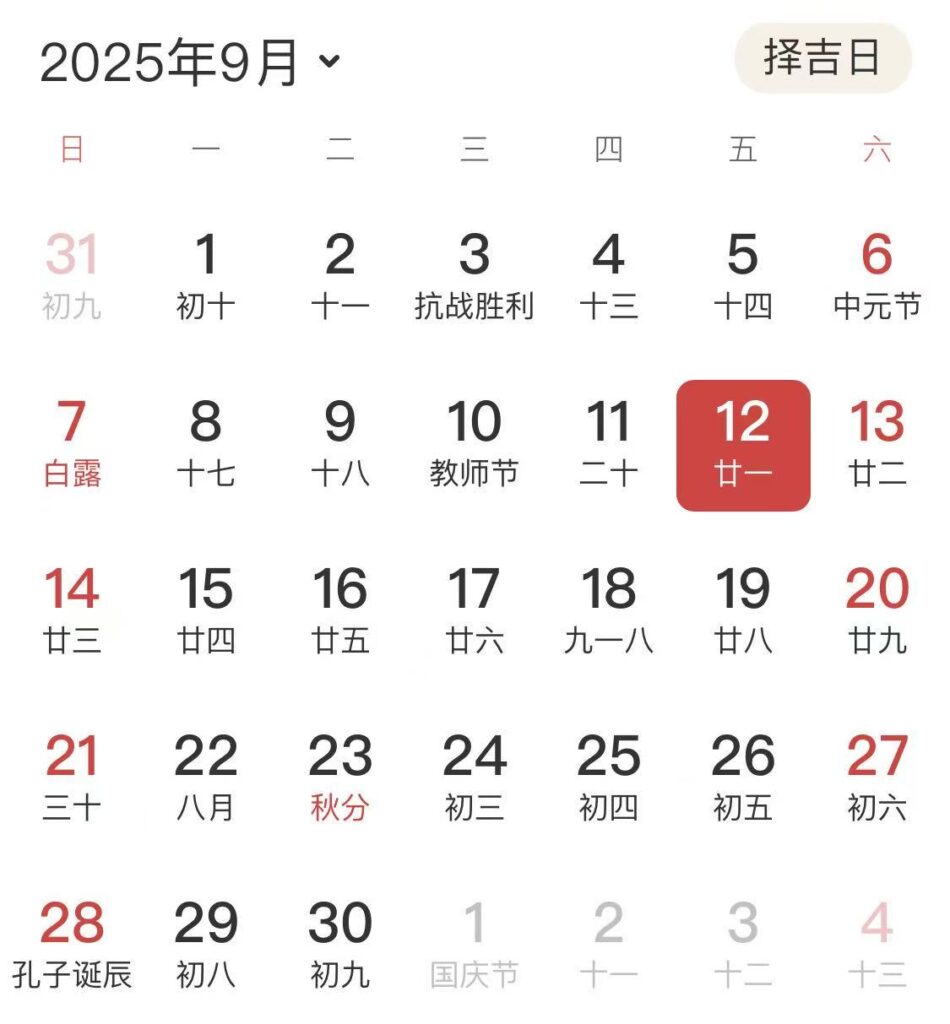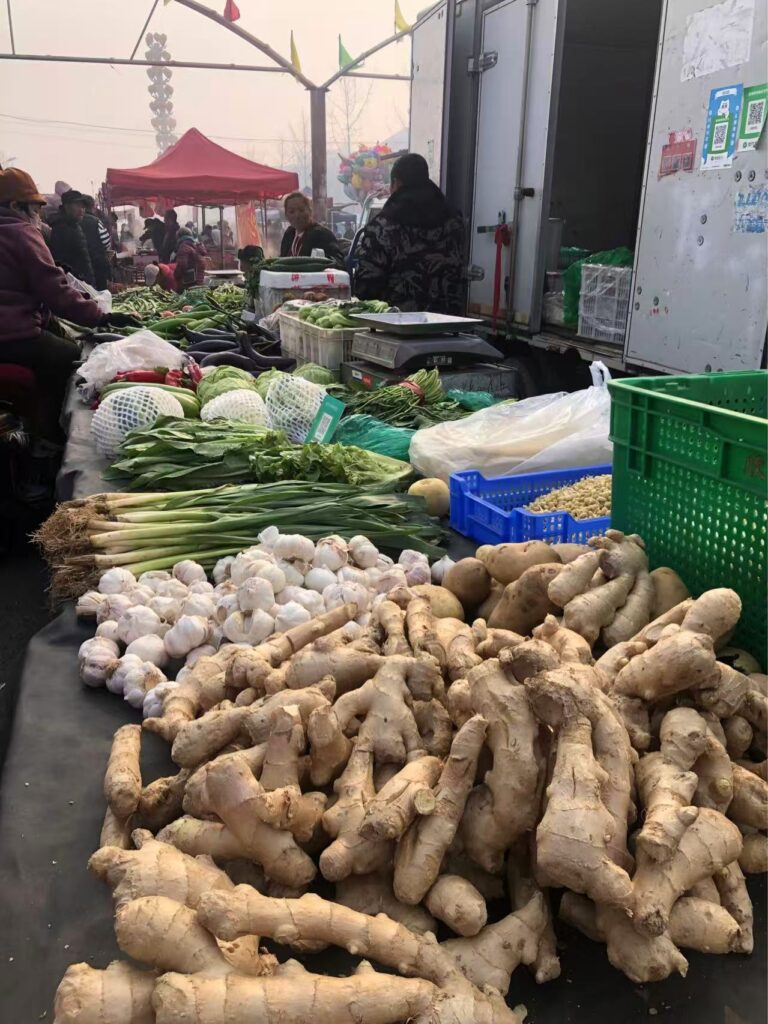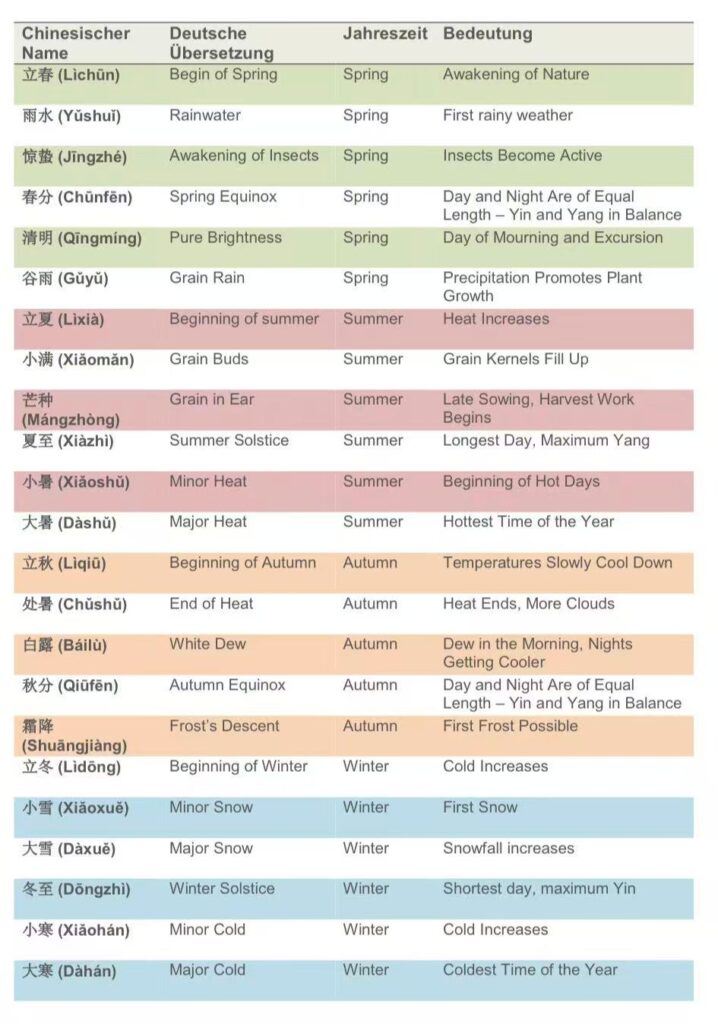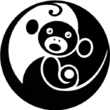The Chinese Calendar
Perhaps you have experienced a traditional Chinese festival, such as the Chinese New Year or the Dragon Boat Festival, and wondered why it falls on a different date each year. The answer: China uses, in addition to our calendar (the Gregorian calendar) the Chinese calendar, which is based on the lunar cycle but also aligns with the sun (so it actually is a lunisolar calendar). The calendar explains why most traditional festivals, as well as the change of seasons and farmers’ markets, appear to be shifted or follow a peculiar rhythm.
The Gregorian calendar vs. the Chinese calendar
The Gregorian calendar is a solar calendar. The division of time is based on the Earth’s orbit around the sun. A year has about 365 days, with 12 months of 30-31 days.The Chinese calendar, in Chinese 农历 (Nongli) – agricultural calendar and also 阴历 (Yinli) – lunar calendar, is based on the phases of the moon. A lunar month begins with the new moon and has 29 to 30 days. A lunar year with 12 lunar months is about 354 days long – shorter than a solar year. Every 2-3 years, a 13th month is added to ensure that the start of the lunar year always falls in the same season.
How the two calendars interact in everyday life
Since 1912, the Gregorian calendar has been officially used in China, but the Chinese lunisolar calendar continues to influence traditions, festivals, farming activities, and everyday life. Most Chinese traditional festivals, like Chinese New Year (first day of a new lunar year), the Dragon Boat Festival (5th Day of the 5th month) and the Mid Autumn Festival (15th day of the 8th month) follow the Chinese calendar, while National Day is on the 1st of October.


A practical use in (China’s) everyday life
After I understood the system, I finally know when the farmers’ market is, which usually takes place every 5 days. Sometimes, however, it is already on the 4th day. I didn’t understand that at all until I was told: The market is based on the lunar calendar and is always on the 5th, 10th, 15th, 20th, 25th, and 30th of the month, for example. However, sometimes a month only has 29 days, so the market is moved to that day. Finally, I can check for myself whether there is a market or not.
The 24 Solar Terms
24 solar terms, in Chinese 节气, last 15-16 days and describe typical changes in weather, climate, and nature that accompany the continuously changing position of the sun. They also provide guidance for activities (planting, caring for plants, harvesting) and explain cultural rituals.
Below you can find an overview of the 24 solar terms and their significance:

I hope this article gave you a short overview about the Chinese calendar system. If you are more interested in this or another topic of the Chinese culture let me know in the comments!
